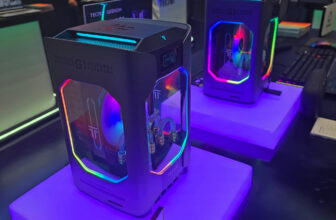Ah, the Raspberry Pi ! This incredible little computer that everyone knows, that can be used for just about everything (home automation, multimedia box, even retro console !). But there has always been a black spot in this so perfect picture: SD cards. It's a bit like playing the lottery every time you insert a new one. Will it last a few months, a few weeks, or maybe a few days? Mystery! So, when the Raspberry Pi Foundation announced its own “optimized” SD cards for our little Pis, I was both skeptical and excited.
For those who, like me, have seen a few SD cards die far too young in their Raspberry Pi (and often at the worst possible time), the announcement of a card specifically designed to last longer, withstand the hazards of intense use, and with improved performance, is downright a godsend.
Why Traditional SD Cards Suffer with the Raspberry Pi
Before diving into the promises of this new card, it’s important to understand why SD cards have never been ideal for the Raspberry Pi. It’s a question of write cycles. Unlike normal use (such as in a camera or camcorder), the Raspberry Pi puts a lot of strain on the SD card. Reads and writes are much more frequent, which quickly exhausts the flash memory. This is particularly the case in the context of a home automation box, which records all the events that occur (changes in temperature, humidity, brightness, movement, power consumption, etc.).
You may have already experienced this situation: everything goes well for a while, then one day, without warning, your Raspberry Pi no longer starts. And then, while digging a little, you discover that your SD card is corrupted. A problem that happened to me at least twice the day before leaving on vacation, obviously. Frustrating, right? That's where these new cards come in.
What makes this card special?
The Raspberry Pi Foundation understood it well: to extend the life of our SD cards (and our nerves at the same time), we had to go further. These new SD cards have been designed specifically to support the intensive uses of a Raspberry Pi. They are faster, more robust and above all, they promise to better resist the wear and tear linked to intensive writing. This isn’t just a cosmetic upgrade, it’s a complete overhaul of how the cards interact with the Pi.

The most technical point worth highlighting is the use of the Command Queue Host Controller Interface (CQHCI), a feature that the Raspberry Pi 5 handles particularly well. Basically, this allows for smarter and more efficient management of instruction queues, which translates into better longevity and better performance.
Why isn’t everyone ditching SD cards for SSDs?
I can see you asking: “But why still use SD cards when SSDs exist?” Good question. Indeed, SSDs are often recommended for those who want a more reliable storage solution over the long term. But not everyone needs (or wants) to invest in an SSD for their Raspberry Pi. For simpler projects, or for those who prefer to keep the configuration as minimalist as possible, the SD card remains a practical and affordable solution.
And that's where this new card makes sense. With prices starting at €9.60 for the 32 GB version and €12.60 for the 64 GB, it remains in line with what we expect from Raspberry Pi: accessible, but high-performance products. In addition, the foundation even offers versions with the OS pre-installed, just to make our lives even easier. Nice, right?
And my opinion on all this?
So, what do you think of this card? Personally, I'm pretty excited. Of course, nothing will replace the robustness of a good SSD, especially for more advanced uses like we do in home automation. But for those who are starting out, or for those who don't want to complicate their lives with an SSD setup, this new SD card seems to be an excellent alternative. It meets a real need (that of increased reliability) while remaining faithful to the Raspberry Pi spirit: accessible and open to all.
However, and I have to be honest, if you plan to use a Raspberry Pi 5 for more serious projects (like a home automation box, for example), I always advise you to consider switching to SSD. But for all other uses, this SD card may be the solution you were waiting for.
In addition, as we have seen in recent months with the mini PC tests, it may now be more interesting to opt for a mini PC like Geekom or Nipogi when you want to make a home automation box or a multimedia server for example. By adding the price of the Raspberry Pi 5, its power supply, its case, its SSD, etc., we often arrive at the price of a fully finished mini PC.
Conclusion
This new SD card developed by the Raspberry Pi Foundation is a welcome step forward for all regular users of these nano-computers. It promises to solve one of the main weak points of the Raspberry Pi: the lifespan of SD cards. Although I continue to recommend an SSD for more ambitious projects, this SD card represents a solid and affordable option for the majority of users. It is a small revolution in the world of Raspberry Pi, and I can’t wait to see how it will hold up over time! If you are interested, it is already available from the official reseller in France, namely Kubii.






Please remain courteous: a hello and a thank you cost nothing! We're here to exchange ideas in a constructive way. Trolls will be deleted.